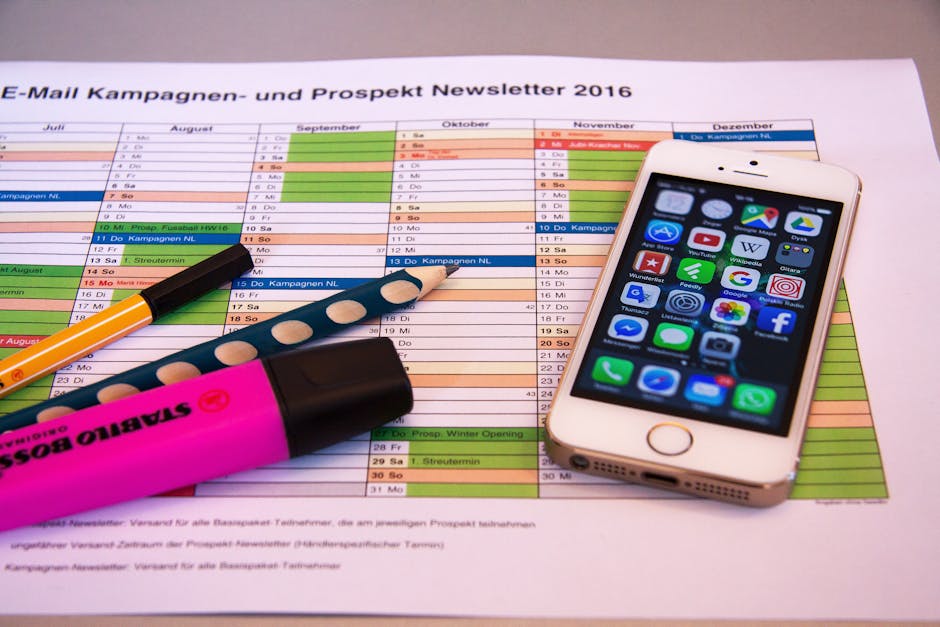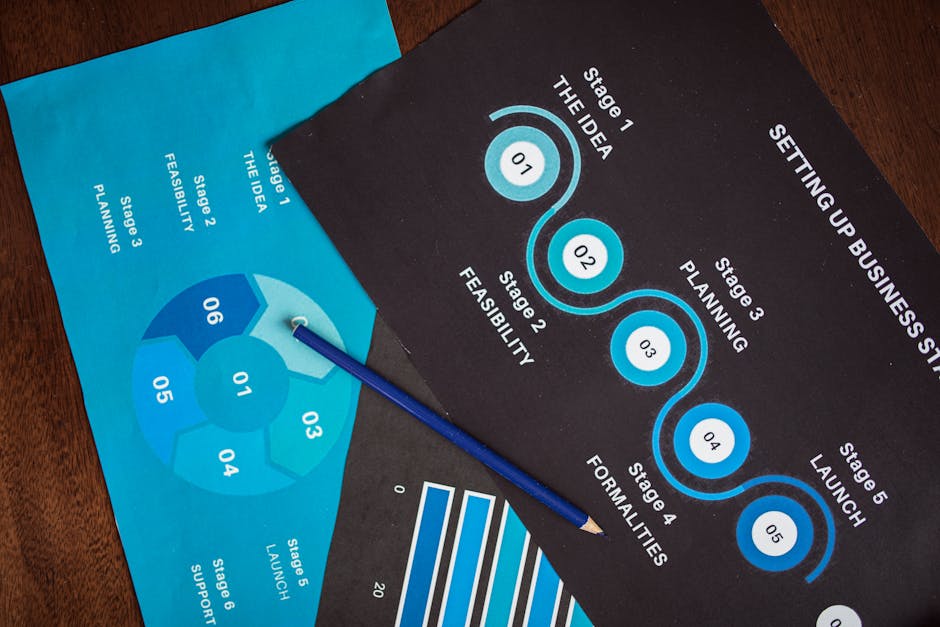Discover the best times to post on Facebook to boost engagement and reach. This guide provides a step-by-step approach to analyzing your audience data and scheduling your posts for optimal impact.
Quick Answer Summary
This comprehensive guide covers essential aspects of best time to post on facebook: a step-by-step guide, including practical steps, best practices, and expert insights.
Introduction: Why Timing Matters on Facebook
In the fast-paced world of social media, simply posting content isn't enough. To maximize your reach and engagement on Facebook, timing is crucial. Understanding when your target audience is most active can significantly impact the visibility and performance of your posts. This section explores the reasons why timing matters and provides a foundation for strategically scheduling your Facebook content.
The Facebook Algorithm and Visibility
Facebook's algorithm prioritizes content that users are most likely to find engaging. One of the key factors influencing this prioritization is recency. Posting when your audience is online increases the likelihood that your content will be seen and interacted with, signaling to the algorithm that it's valuable and relevant. This, in turn, can boost your post's visibility in the newsfeeds of a broader audience. Conversely, posting at off-peak hours may result in your content getting buried, even if it's high-quality.
Why General Advice Isn't Enough
While you can find articles online suggesting general "best times" to post on Facebook, these recommendations are often too broad to be truly effective. What works for one business or industry might not work for another. Factors such as your audience's demographics, location, and online habits all play a role. Relying solely on generic advice can lead to missed opportunities and suboptimal results. A more tailored approach is essential.
The Importance of Tailoring to Your Audience
The most effective Facebook posting schedule is one that's customized to your specific audience. Understanding when *your* followers are most active is paramount. This requires analyzing your existing Facebook data and experimenting with different posting times to identify patterns. Consider factors like time zones if you have a geographically diverse audience. Tools like Facebook Insights can provide valuable data on your audience's online behavior, helping you make informed decisions about your posting schedule. Social media management platforms, such as PostLayer, often include analytics dashboards to help you track engagement and identify optimal posting times, saving you time and effort in the process. By focusing on your unique audience, you can significantly improve your Facebook marketing results.
Step 1: Understand Your Facebook Audience
Understanding your Facebook audience is the crucial first step in determining the best time to schedule your posts. Posting when your audience is most active significantly increases the likelihood of engagement, leading to higher visibility and reach. Ignoring this step could result in your content being missed by a large portion of your target demographic.
Key Considerations:
- Accessing Facebook Insights: Utilize Facebook's built-in analytics tool, Insights, to gather data about your audience. This is your primary source of information.
- Demographics: Age, Gender, Location: Analyze the age, gender, and location breakdown of your followers. This information helps you understand their general characteristics and potential time zone differences.
- When Your Fans Are Online: Pay close attention to the "When Your Fans Are Online" data within Insights. This section provides a visual representation of the days and times when your audience is most active on Facebook.
💡 Pro Tip: Don't rely solely on general best practices. While there are common trends, the optimal posting times can vary considerably depending on your specific niche and audience. Regularly review and adjust your posting schedule based on your Insights data.
By thoroughly understanding your Facebook audience through Insights, you can create a more effective content strategy. This data-driven approach will allow you to schedule your posts at times when they are most likely to be seen and engaged with, ultimately maximizing your reach and impact on the platform. Many social media scheduling tools, like PostLayer, can also help analyze this data and suggest optimal posting times based on your audience activity.
Step 2: Analyze Past Post Performance
Before you can strategically schedule your Facebook posts, you need to understand what has worked well in the past. Analyzing your past post performance is a critical step in determining the optimal times to publish content and maximize engagement. This involves diving into your Facebook analytics to identify trends and patterns related to timing and content type.
Key Considerations:
- Identifying Your Top-Performing Posts: Look at posts with high engagement rates (likes, comments, shares, saves). Note the day and time they were published. Also, carefully review the content itself to understand why it resonated with your audience.
- Looking for Patterns in Timing: Are there specific days of the week or times of day when your posts consistently perform better? Many businesses find that weekday evenings or weekend mornings are peak times, but this varies greatly depending on your target audience.
- Considering Content Type and Timing: Different types of content might perform better at different times. For example, a time-sensitive announcement might be best posted early in the morning, while a longer, more engaging video might be better suited for the evening when people have more leisure time.
💡 Pro Tip: Most social media platforms, including Facebook, offer built-in analytics tools that provide valuable insights into post performance. Regularly review these analytics to stay informed about what's working and adjust your scheduling strategy accordingly. Many social media management platforms, like PostLayer, can also provide comprehensive analytics across multiple platforms, making it easier to identify overarching trends.
By thoroughly analyzing your past post performance, you can gain a data-driven understanding of your audience's behavior and preferences. This information will empower you to make more informed decisions about when to schedule your Facebook posts, ultimately leading to increased engagement and reach.
Step 3: Experiment and Test Different Times
Finding the optimal time to post on Facebook isn't a one-size-fits-all solution. What works for one business may not work for another. That's why experimentation and testing are crucial to refining your posting strategy and maximizing engagement. This involves creating a posting schedule based on initial research and then actively monitoring and adjusting based on real-world performance.
Key Considerations:
- Creating a Posting Schedule: Start by mapping out a schedule that includes different days of the week and times of day. Consider your initial assumptions about when your audience is most active, but be prepared to challenge those assumptions.
- Varying Posting Times and Days: Don't stick to the same rigid schedule. Experiment with posting at different times throughout the day and on different days of the week. This allows you to gather data on when your audience is most responsive to your content.
- Tracking Engagement and Reach: Closely monitor the performance of your posts. Pay attention to metrics such as likes, comments, shares, and reach. Use Facebook Insights or a social media management platform to track these metrics over time.
💡 Pro Tip: Use A/B testing to compare the performance of two different posting times. For example, post the same content at 10 AM on Monday and 2 PM on Tuesday, then compare the engagement metrics to see which time performs better. Many social media scheduling tools, like PostLayer, provide analytics and insights that can help you identify optimal posting times based on your historical data. This can save you time and effort in the long run.
By systematically experimenting with different posting times and days, and carefully tracking the results, you can identify patterns and trends that reveal the best times to reach your audience on Facebook. This iterative process of testing, analyzing, and adjusting will ultimately lead to a more effective social media strategy and improved engagement.
Step 4: Use a Social Media Scheduling Tool
Once you've identified the optimal times to post on Facebook based on your audience insights and platform analytics, the next crucial step is to implement a system for consistent scheduling. This is where social media scheduling tools become invaluable. Manually posting every update at the right time can be time-consuming and difficult to manage, especially if you're handling multiple social media accounts.
Benefits of Automation:
- Time Savings: Schedule posts in advance and free up valuable time for other tasks.
- Consistency: Maintain a regular posting schedule, even when you're busy or on vacation.
- Strategic Planning: Plan your content calendar weeks or even months in advance.
- Cross-Platform Management: Many tools allow you to schedule content across multiple social media platforms from one central dashboard.
Scheduling posts in advance allows you to maintain a consistent online presence, even when you're unable to post manually. Most social media scheduling tools offer a visual content calendar, making it easy to plan and organize your posts. These tools also often offer analytics and reporting features, providing insights into post performance and audience engagement. Analyzing this data helps you refine your posting strategy and optimize your content for maximum impact.
💡 Pro Tip: Experiment with different posting times and content formats to see what resonates best with your audience. Use the analytics provided by your scheduling tool to track your progress and make data-driven decisions.
Platforms like PostLayer are designed to streamline your Facebook scheduling and analytics. PostLayer offers a range of features to help creators, small businesses, and agencies manage their social media presence efficiently. Some key features include multi-platform scheduling, a visual content calendar, an AI caption generator, and smart timing recommendations. PostLayer also provides analytics and insights to help you track your performance and optimize your strategy. By leveraging the power of social media scheduling tools, you can save time, improve consistency, and ultimately achieve better results on Facebook.
Step 5: Refine Your Strategy Based on Results
Scheduling your Facebook posts at the "best" times is an ongoing process, not a one-time task. Once you've implemented an initial strategy based on analytics and audience insights, it's crucial to continuously monitor your results and refine your approach. This iterative process ensures that you're always optimizing your posting schedule for maximum engagement.
Key Considerations:
- Continuous Monitoring and Adjustment: Regularly check your Facebook analytics to see how your posts are performing at different times. Look for patterns in engagement, reach, and click-through rates. If you notice a dip in performance, consider adjusting your schedule.
- Adapting to Algorithm Changes: Social media algorithms are constantly evolving. What worked well last month may not be as effective today. Stay informed about changes to the Facebook algorithm and adjust your strategy accordingly. Many social media blogs and news sources publish updates on algorithm changes.
- Staying Informed About Social Media Trends: Keep an eye on broader social media trends and how they might impact your audience's behavior on Facebook. For instance, a major news event or cultural moment could shift when people are most active on the platform.
💡 Pro Tip: Use a social media management platform like PostLayer to schedule your posts and track your analytics in one place. PostLayer can help you identify optimal posting times based on your audience's activity and provides tools to easily reschedule posts based on performance data.
By consistently monitoring your results, adapting to algorithm changes, and staying informed about social media trends, you can ensure that your Facebook posting schedule remains effective over time. Remember that finding the optimal posting times is an ongoing journey of testing, analyzing, and refining your approach.
Conclusion: Mastering Facebook Timing for Maximum Impact
Determining the optimal time to post on Facebook is an ongoing process of observation and adaptation. While general guidelines exist, the most effective strategy is tailored to your specific audience and content. Consistently analyzing your performance data is crucial for refining your posting schedule and maximizing reach.
Key Takeaways:
- Audience behavior varies. What works for one page may not work for another.
- Experimentation is key. Test different posting times and days to identify patterns.
- Analyze your data. Facebook Insights provides valuable information about when your audience is online and engaging with your content.
💡 Pro Tip: Use Facebook Insights to identify peak activity times for your audience. Focus on posting content just before and during these periods to increase visibility.
The importance of consistency in your posting schedule cannot be overstated. Regular posting keeps your audience engaged and helps maintain your presence in their feeds. However, consistency should not come at the expense of quality. Aim for a balance between frequent posting and valuable, engaging content.
Engagement is the ultimate goal. A post seen by many but interacted with by few is less valuable than a post seen by fewer but garnering significant likes, comments, and shares. Tailor your content to encourage interaction and foster a sense of community around your page.
Many social media management tools, like PostLayer, offer features to schedule posts in advance and analyze performance data, allowing you to optimize your timing strategy. These platforms can help streamline your workflow and ensure consistent posting, even when you're short on time.
In conclusion, mastering Facebook timing requires a blend of data analysis, experimentation, and consistent effort. By understanding your audience's habits and adapting your strategy accordingly, you can significantly improve your reach, engagement, and overall impact on the platform.
Conclusion
Understanding and implementing the strategies outlined in this guide will help you make the most of best time to post on facebook: a step-by-step guide. The key is to start with the fundamentals and gradually build upon your knowledge and skills.
🔑 Key Takeaways
- •Why Timing Matters on Facebook
- •Step 1: Understand Your Facebook Audience
- •Step 2: Analyze Past Post Performance
- •Step 3: Experiment and Test Different Times
Quick Answer: Discover the best times to post on Facebook to boost engagement and reach.
Stop Guessing, Start Scheduling Facebook Posts Like a Pro!
Now that you know the best times to post on Facebook, make it effortless with PostLayer. Our smart scheduling recommendations, visual content calendar, and AI-powered caption generation take the guesswork out of your social media strategy. Schedule across multiple platforms, including Instagram, Twitter/X, LinkedIn, TikTok, YouTube, and Pinterest, all in one place. Plus, unlock powerful analytics to see what's working and optimize your posting schedule for maximum engagement.
Start Your 7-Day Free Trial - No Credit Card Required!

